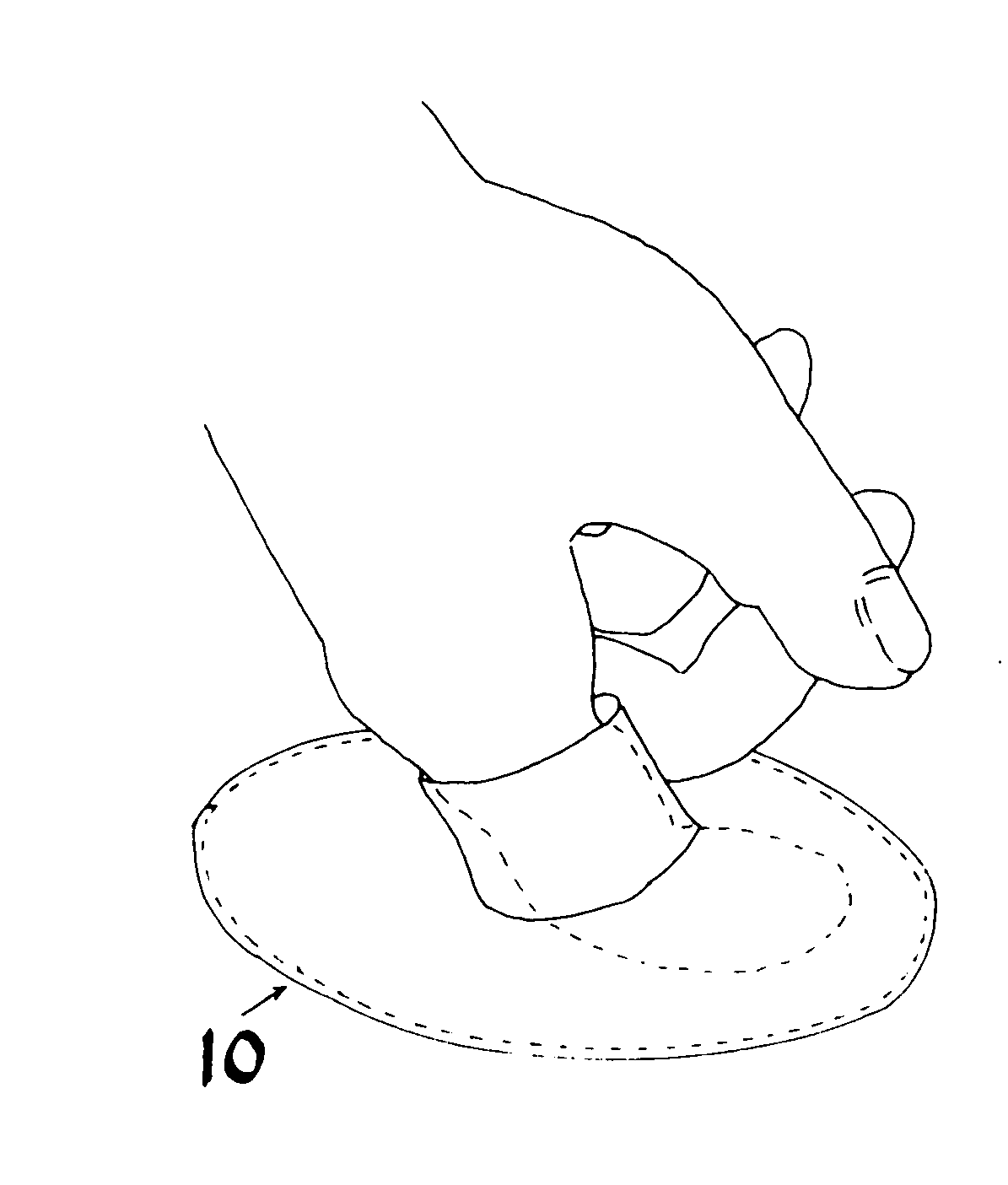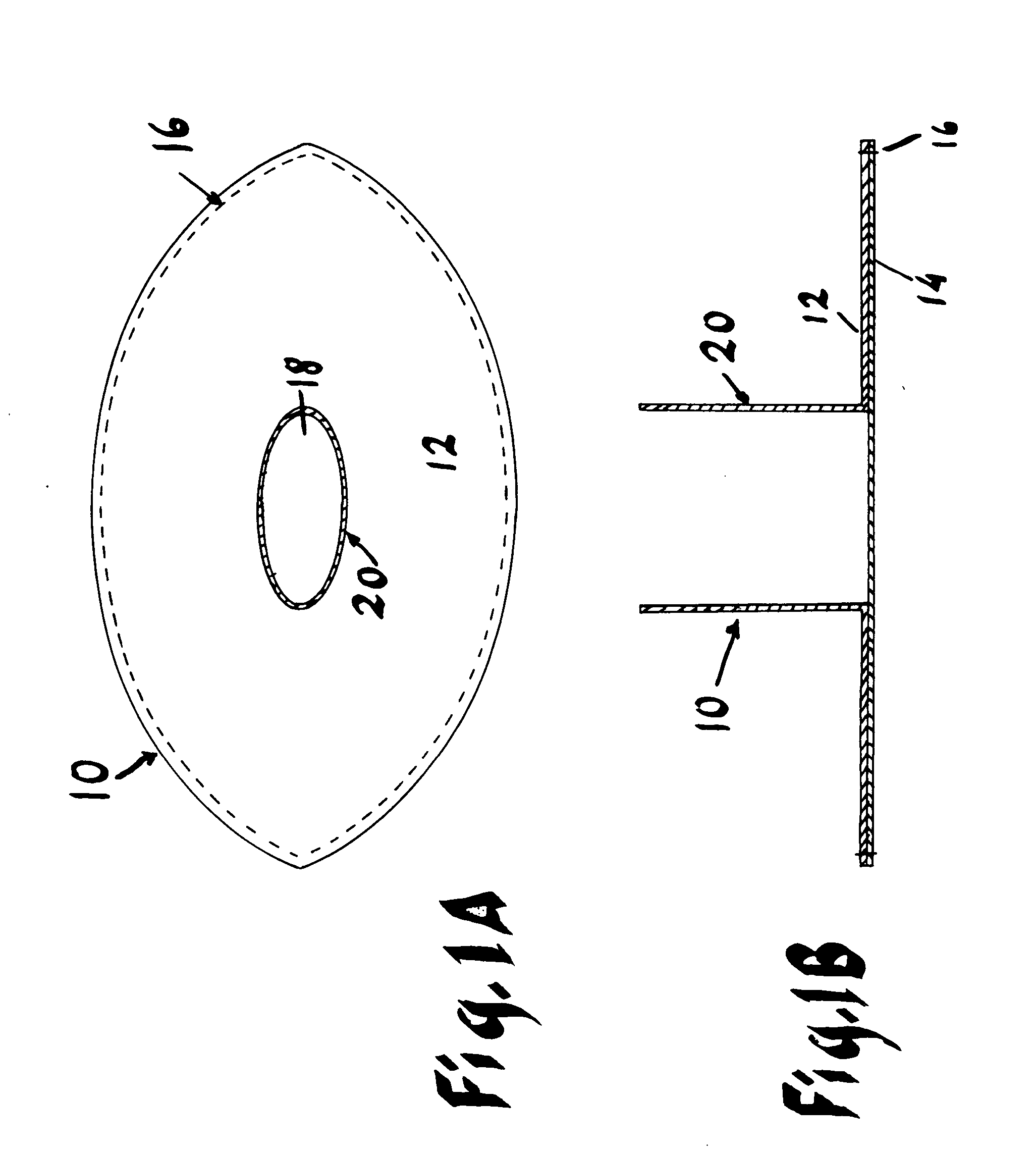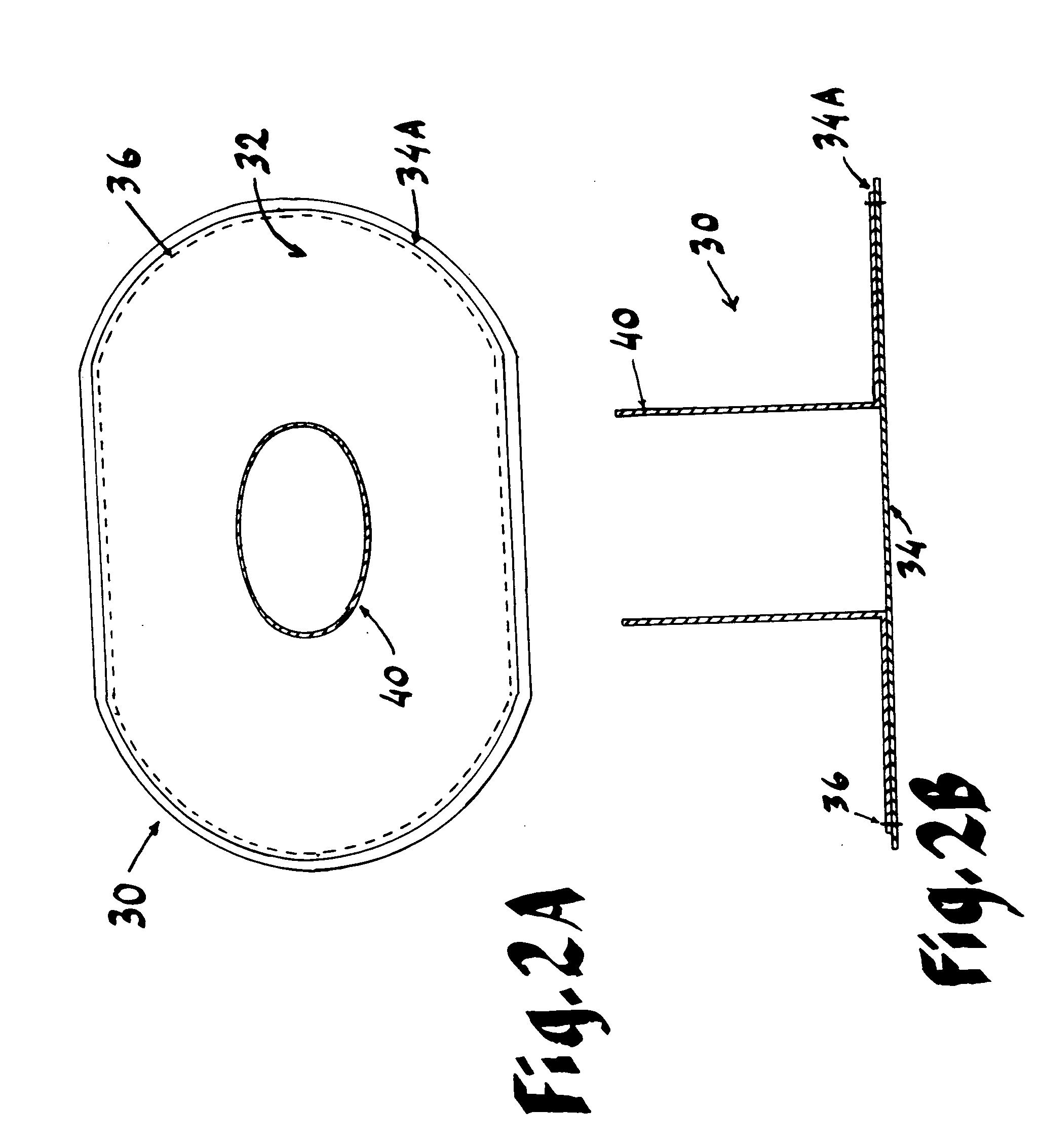Hernial prosthesis for intraprosthetic fixation
a herniated prosthesis and fixation technology, applied in the field of new herniated prosthesis, can solve the problems of time-consuming and labor-intensive suture insertion to fix the prosthesis to the abdominal wall, inability to perform staples or spiral tacks using laparoscopic techniques, and inability to achieve the effect of reducing the risk of infection
- Summary
- Abstract
- Description
- Claims
- Application Information
AI Technical Summary
Benefits of technology
Problems solved by technology
Method used
Image
Examples
Embodiment Construction
[0026] With reference now to the drawings, FIGS. 1A and 1B depict a preferred embodiment of a herinal prosthesis, generally referenced as 10, in accordance with the present invention.
[0027] Prosthesis 10 includes a top layer 12 and a bottom layer 14 secured together proximal the peripheral edges thereof by a seam 16. Seam 16 is preferably formed by stitching using a dark colored thread which contrasts with the lighter colored top and bottom layers to allow the surgeon to visually detect the peripheral edge of prosthesis 10 during surgery. In alternate embodiments, seam 16 may be formed using an adhesive, by fusing or welding the top and bottom layers, or by any other suitable method. Top and bottom layers 12 and 14 are prefereably fabricated from a synthetic mesh, such as polypropylene mesh, and is designed for extraperitoneal insertion of the mesh such as in the repair of inguinal or femoral hernias. Top layer 12 defines an opening 18, and includes a central sleeve 20 attached to ...
PUM
 Login to View More
Login to View More Abstract
Description
Claims
Application Information
 Login to View More
Login to View More - R&D
- Intellectual Property
- Life Sciences
- Materials
- Tech Scout
- Unparalleled Data Quality
- Higher Quality Content
- 60% Fewer Hallucinations
Browse by: Latest US Patents, China's latest patents, Technical Efficacy Thesaurus, Application Domain, Technology Topic, Popular Technical Reports.
© 2025 PatSnap. All rights reserved.Legal|Privacy policy|Modern Slavery Act Transparency Statement|Sitemap|About US| Contact US: help@patsnap.com



